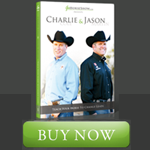Next up in our Congress pattern series is multiple Congress Champion trainer and AQHA judge Christa Baldwin of Stanton, Michigan. Christa has judged every major show around the country and internationally including every AQHA World Show, NSBA World Show and the Tom Powers Futurity. She has had several Congress Champions and Reserve World Champions, as well as national all-arounds and year end high points in many different events. Christa is an AQHA National Director and sits on the AQHA Judges committee as well as the Professional Horseman’s council.
We thought it would be beneficial to our readers to find out from an AQHA Judge whose customers have had success in this class, how the patterns should be executed. As far as why GoHorseShow chose the Amateur Horsemanship pattern, we wanted to breakdown the harder patterns because the easier patterns have many of the same maneuvers.
We would like to thank HorseShowPatterns.com for allowing us to post the pattern in the article as well as provide a link to the pattern. You may view the pattern that is posted below or click here to download.
Amateur Horsemanship Breakdown as seen by Christa Baldwin
The Amateur Horsemanship pattern is broken down into nine different maneuvers. There are only two cones in this pattern so the exhibitor really needs to evaluate where each maneuver is executed to lay out a smooth, confident presentation.
 I like to see a forward moving pattern because it shows confidence and communication with their horse. It also shows degree of difficulty and raises the bar, therefore your score. However, you can only ask what you feel comfortable asking of your horse and the level you have obtained w/your partner. If you ask too much or more than you are prepared, mistakes happen then you are in the penalty box or negative and that is never good.
I like to see a forward moving pattern because it shows confidence and communication with their horse. It also shows degree of difficulty and raises the bar, therefore your score. However, you can only ask what you feel comfortable asking of your horse and the level you have obtained w/your partner. If you ask too much or more than you are prepared, mistakes happen then you are in the penalty box or negative and that is never good.
1) First is the jog 1/2 way to a stop and turn 360 left. I always have my clients start a little before the cone so that they are jogging at the cone. When you stop, stop crisp. You have to know your horse and whether to settle your horse a second or go right into the turn. A turn on the haunches is a FORWARD turn so keep your momentum forward and don’t pull your horse backwards. Start out slow and build speed in your turn. Correctness is way more important than speed.
2) Then it calls for a lope off in the left lead with a square corner. I would execute this corner using my left leg lightly to bend my horse around as I use my outside leg to cue the turn. Also combining that with opening my hips to the left keeping a very consistent speed.
3) Now, you are asked to turn 1 1/2 turns to the right. You will be facing exactly back the direction you just came. You will need to step off in the lope straight for a stride or two, making sure your horse is between your hand and legs before you ask for speed. Then, as you approach B, bring your horse back to a collected lope and stop at B.
4) Perform a 180 turn left and extend the jog until even with A. Remember your adrenaline is high so be careful and establish a jog for a couple steps before you ask for the extension so as not to lope off.
5) Then stop and back one horse length. Do NOT nod or look back at the judge. Don’t forget to exit at a jog. Some patterns say how to exit and some don’t. This one does so be sure to do that.
Your horse should be soft in his face. I don’t like to see a horse moving his head up and down. To me, that is resistance and lack of communication. So be sure to drive from your legs into the bit and communicate with your legs, seat and hands (even voice). It is all about communicating to execute the best pattern possible.
Sell yourself as soon as you walk up to the cone or enter the arena. Watch others because visualizing is one of the best ways to have that look of a winner. If you have that communication with your horse, and execute a great pattern, you will show the confidence and determination to get on the judge’s card.








